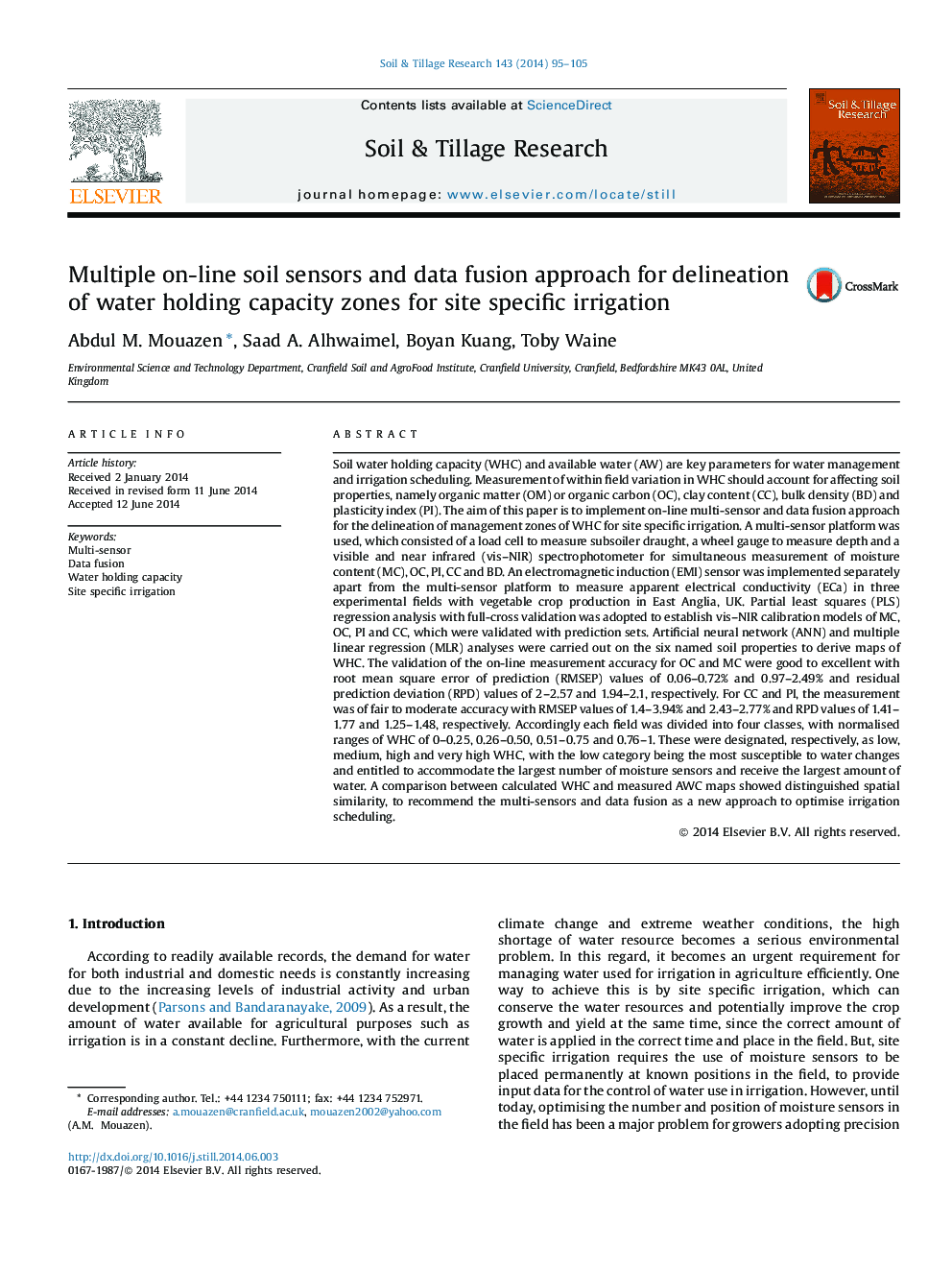| کد مقاله | کد نشریه | سال انتشار | مقاله انگلیسی | نسخه تمام متن |
|---|---|---|---|---|
| 305696 | 513044 | 2014 | 11 صفحه PDF | دانلود رایگان |
• Multi-sensor and data fusion approach can be a successful approach for delineation of management zones for site specific irrigation.
• On-line vis–NIRS sensors measure multi-soil properties simultaneously.
• A new water holding capacity index is proposed and tested.
• Both MLR and ANN can be used for successful fusion of on-line collected data.
Soil water holding capacity (WHC) and available water (AW) are key parameters for water management and irrigation scheduling. Measurement of within field variation in WHC should account for affecting soil properties, namely organic matter (OM) or organic carbon (OC), clay content (CC), bulk density (BD) and plasticity index (PI). The aim of this paper is to implement on-line multi-sensor and data fusion approach for the delineation of management zones of WHC for site specific irrigation. A multi-sensor platform was used, which consisted of a load cell to measure subsoiler draught, a wheel gauge to measure depth and a visible and near infrared (vis–NIR) spectrophotometer for simultaneous measurement of moisture content (MC), OC, PI, CC and BD. An electromagnetic induction (EMI) sensor was implemented separately apart from the multi-sensor platform to measure apparent electrical conductivity (ECa) in three experimental fields with vegetable crop production in East Anglia, UK. Partial least squares (PLS) regression analysis with full-cross validation was adopted to establish vis–NIR calibration models of MC, OC, PI and CC, which were validated with prediction sets. Artificial neural network (ANN) and multiple linear regression (MLR) analyses were carried out on the six named soil properties to derive maps of WHC. The validation of the on-line measurement accuracy for OC and MC were good to excellent with root mean square error of prediction (RMSEP) values of 0.06–0.72% and 0.97–2.49% and residual prediction deviation (RPD) values of 2–2.57 and 1.94–2.1, respectively. For CC and PI, the measurement was of fair to moderate accuracy with RMSEP values of 1.4–3.94% and 2.43–2.77% and RPD values of 1.41–1.77 and 1.25–1.48, respectively. Accordingly each field was divided into four classes, with normalised ranges of WHC of 0–0.25, 0.26–0.50, 0.51–0.75 and 0.76–1. These were designated, respectively, as low, medium, high and very high WHC, with the low category being the most susceptible to water changes and entitled to accommodate the largest number of moisture sensors and receive the largest amount of water. A comparison between calculated WHC and measured AWC maps showed distinguished spatial similarity, to recommend the multi-sensors and data fusion as a new approach to optimise irrigation scheduling.
Journal: Soil and Tillage Research - Volume 143, November 2014, Pages 95–105
